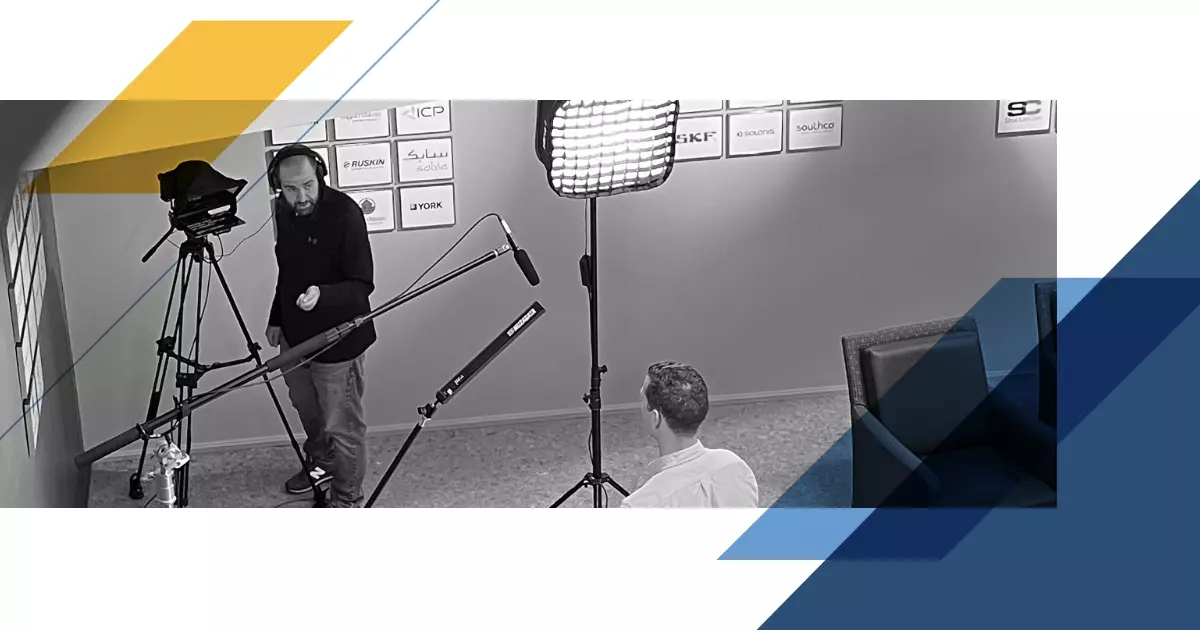Put Some Strategy Behind Your Next Video

Video is an effective way to educate, increase brand awareness and generate leads. Consider just two aspects – the increase in the number of people engaging with video and the various ways you can use video to make an impact as a B2B company:
- According to the 2023 State of Video Report from video hosting platform Wistia, the minutes watched on their platform totaled 12,297,000,000. That’s 12 billion (with a B!) – an 89% increase since 2019. And that’s just one video hosting platform … imagine the number if you totaled all the various hosting platforms.
- For B2B companies, video continues to be a key part of marketing plans. Product launch videos, testimonials and tutorials continue to be popular in the B2B space. For example, for Pixelle Specialty Solutions, we produced a series of testimonials as part of International Women’s Day that highlighted women in manufacturing. In addition, our clients are continuing to increase the number of videos they produce to share on social media. (An interesting point to note is that we’ve seen a lot of engagement on Instagram Reels.)
Given its potential, video should be a key part of your marketing plan. But do you have an effective video strategy in place?
Maybe video development is new to you and you’re feeling overwhelmed. Or maybe you’re a grizzled vet, having been a part of dozens or even hundreds of video projects. You and your team will want to make sure every step of the production process is complete to ensure its success. You’ll hit the ground running and determine the budget and available resources to help shape decisions regarding equipment, location and production quality. Then, jump right into the treatment, script and storyboard and create a production timeline – vital for maintaining a cohesive narrative and meeting deadlines. Before you know it, you get into production and shoot the video. Then, off to postproduction, and after (hopefully) only a few revisions, it gets finalized and sent off to your audience’s adoration.
Before doing any of that, did you consider why you were making a video? Or who the intended audience is? Where is it going to live? How in the world are you going to get it all done?
Don’t get me wrong; scripts, equipment, timelines are certainly very important, and all that should be considered very carefully at the right time. But, before your next B2B video production, take some time to consider “who, what, where, when, why and how” to set your project up for success:
- Who: Consider your target audience. You have a message you want to convey to them. Determine the type of video content they like, and if you don’t know this already, do some research. Keep your target audience in mind throughout the production process.
- What: You know your audience. Now, develop the content. Keep in mind the style of the video. What resonates with your audience? Do they prefer testimonial videos that aren’t overly produced? Or perhaps an animated explainer-type video has performed well in the past. Given the topic or message of the video, which type of video do you think will make the most sense?
- Where: Figure out where this content is going to live. Hopefully, it is where your audience is! It’s easy to upload it to a video hosting site like YouTube or Vimeo, check a box that it’s been uploaded and move on to the next project. But take it to where your audience is. Promote it on your social channels (especially if you know you have an active audience on a particular channel). Make an event out of the “premier” of your video if the content warrants it. Put some paid promotion behind it. Please don’t just upload it and forget it. You allocated some of your budget dollars and likely some sweat equity making it to just do that.
- When: This one should be obvious. Define when the video needs to be completed by, and make sure the team helping you knows this as well. You may need more time than you’d think depending on the scale of the production.
- Why: This one is a big one. Establishing why you want to make a video is important because it provides clarity and purpose to your project, guiding your creative decisions and content development. Define your goals for the video and outline what would make it a successful project. Whether you’re working with internal or external resources, make sure your team knows and understands the “why.” The answer to “why” could also help guide the level of production for your video. A video to increase brand awareness will likely look a lot different from an educational video.
- How: You’ve got all your questions answered, except for “how.” If you don’t have internal resources readily available, this is where an agency or production company can come in and help. Make sure they know the who, what, where, when and why … they can take care of the “how” and get it done for you.
Put some strategy and thought behind your next video endeavor. If you need help answering these questions, talk to your team or partners. Maybe you’ve been doing this already (perhaps in the form of a creative brief) – great! Keep doing it! And make sure all the key stakeholders on the projects are aware and on the same page. But this also doesn’t need to be a formal document. Have the conversation with your production team, and make sure everyone is aligned from the start. Videos can be a great marketing tactic – making a tremendous impact when done right. Make your next one a successful one.
Sign Up for our Newsletter - Get agency updates, industry trends and valuable resources delivered directly to you.
Tom Gorman - Executive Producer
Tom oversees video, audio and motion graphics that create compelling experiences for our clients’ audiences. As senior producer, Tom manages our internal video support team. He is the primary point of contact for the creation of all client video, photo, audio, motion graphic and 2D/3D animation content, and he supports our R&D efforts so we can continue providing our clients with the latest in augmented reality, virtual reality and more.




